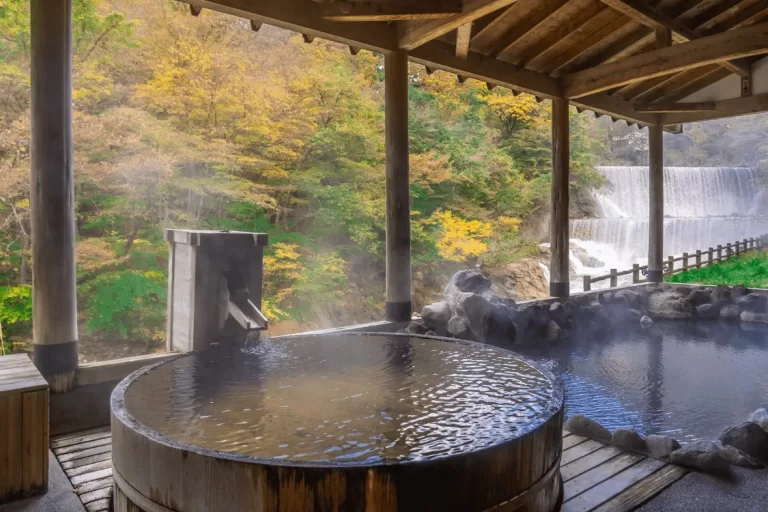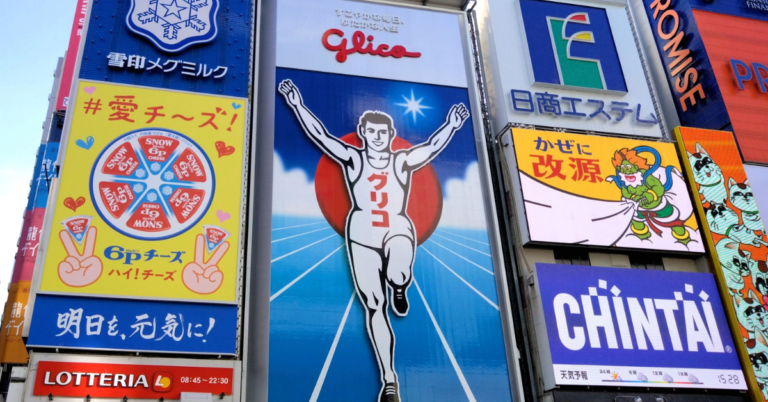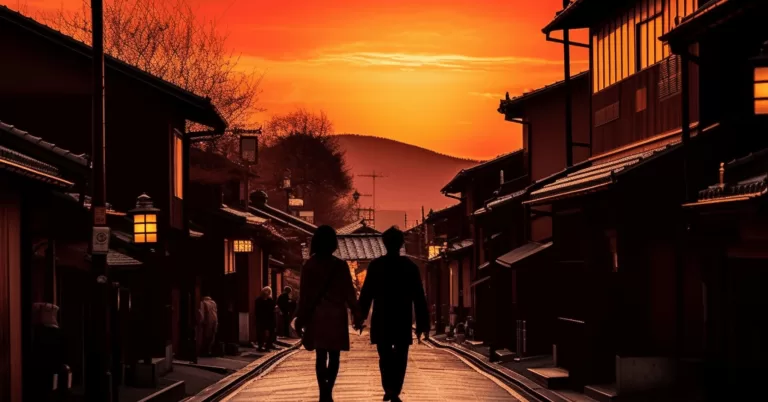Visiting Japan Without Knowing Japanese – A Complete Guide in 2024
With Japan’s influence on anime, technology, cars, food, to name a few, you must visit Japan once in your life. Yet, many travelers hesitate, wondering if the idea of visiting Japan without knowing Japanese is even possible – the answer is a big YES.
If you are visiting Japan without knowing Japanese, you would need to utilize tech tools, understand key cultural cues, and learn essential phrases to navigate and enjoy your trip. In this article we will highlight and share the things you need to prepare and be aware of when visiting Japan.
MUST-HAVES When Visiting Japan Without Speaking Any Japanese
When in Japan, you need to be aware of applications in your smartphone you should download prior to coming to Japan.

- Must-Have Apps:
- Google Maps: Navigating Japan’s sprawling cities and countryside becomes a breeze with this app. It provides accurate transit information, walking routes, and even bicycle paths.
- Google Translate: You might struggle to talk to local Japanese people in English and there might be times when you need a more in-depth translation. Google Translate also has its camera feature, you can translate signs, menus, and brochures on the go.
- Japan Travel by NAVITIME: Tailored for tourists, this app offers comprehensive travel information, from transit routes to local attractions. It also provides useful tips, ensuring you make the most of your visit.
- Staying Connected:
- Tourist SIM Card: Available at airports and electronic stores, these SIM cards offer data packages suitable for short-term stays. They’re perfect for travelers who need to make calls or send texts.
- Pocket Wi-Fi: A popular choice for tourists, pocket Wi-Fi devices offer unlimited data, allowing multiple devices to connect. They can be rented at airports or ordered online in advance.
- Free Wi-Fi Spots: Many cities in Japan offer free Wi-Fi in public areas, train stations, and cafes. Look out for signs or ask at local tourist information centers.
Navigating Transportation When Visiting Japan Without Knowing Japanese
Local’s tip: As a local who have friends from abroad visiting Japan, I can assure you that the easiest way of transportation (of course aside from a private car and taxi) would be train.
In Tokyo, if you are in a situation where you have an option to choose whether take the train or bus, I highly suggest you to take the train instead of bus if you are visiting Japan without knowing Japanese.
This is because while for most buses in Tokyo you would have to pay a fixed amount (usually around 220 Japanese Yen) regardless of your destination upon entering the bus, there are still some buses where you would have to get a ticket from one door, then before leaving the bus, you have to give the ticket to the bus driver, the bus driver will tell you how much the amount is (in Japanese!), then you have to pay the money in that amount.
Imagine the horror of you not understanding what the driver is saying and there are more than 10 people behind you waiting for your payment to be completed? 😱
Of course, these kind of bus experiences could be a part of your journey but especially in Tokyo where people move very fast and are always in a hurry, I personally suggest to take train rather than bus. By the way, when in Kyoto, you would find most of the transportation to major tourist attractions would be in bus.
Digital Aids
Like what we discussed above in the must-have apps, platforms like Google Maps are not only English-friendly but also incredibly accurate for route planning in Japan. They provide real-time updates, platform details, and even fare costs.
Signages
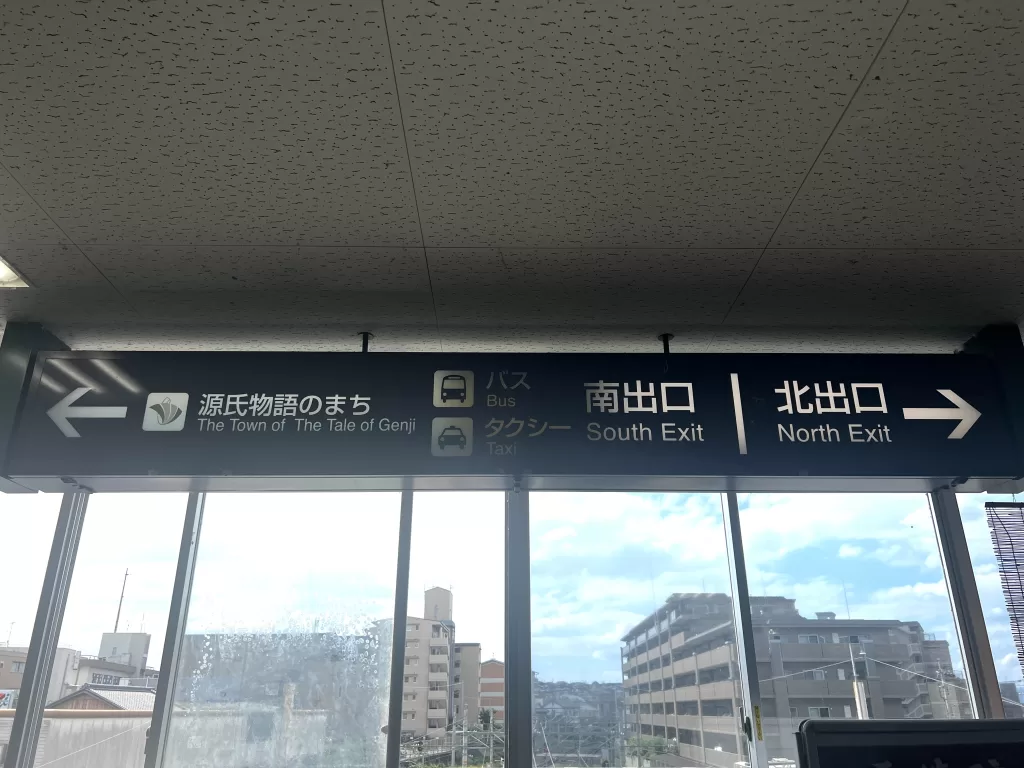
While Japan is known for its complex character scripts, major transit hubs like Ginza and Shinjuku, especially in cities frequented by tourists, have signs in both Japanese and English. This is particularly true for train and subway stations, bus stops, and even on many public buses and trains themselves.
For example, in the image above which was taken when we were having Uji day trip in Kyoto, you can see that there are both Japanese and English signs on the directions. In addition to the exit signs most train stations also mentions the directions of some selected attractions.
Interactions with Locals
If you find yourself in a local eatery or a traditional inn (ryokan) run by the elderly, be prepared for limited English. In such situations, a translation app can be a lifesaver.
However, in popular tourist spots, museums, and major attractions like the Tokyo Tower, Tokyo Disney Sea, English is commonly spoken and understood.
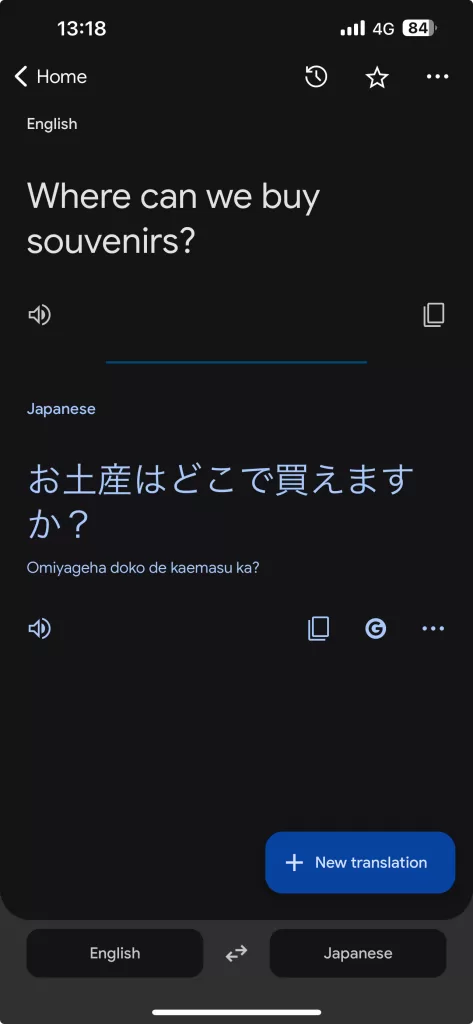
For example, in the image above, you can see that there is a translation from English to Japanese and you can even tap the speaker sign for the translated words to be spoken – which of course definitely helps when visiting Japan without knowing Japanese.
Using the JR Pass
For those planning to travel between cities, the Japan Rail (JR) Pass is a cost-effective option. It offers unlimited travel on JR trains for a set number of days, making inter-city travel both convenient and economical.
Taxis
Traditional taxis are available across Japan, with drivers known for their professionalism. However, don’t be surprised if your taxi driver doesn’t speak English.
It’s a good practice to have your destination address written in Japanese or shown on a map. Ride-sharing services, like Uber, are growing but are more prevalent in major cities.
Non-Verbal Communication When Visiting Japan Without Knowing Japanese
Here in Japan, we place immense value on non-verbal cues, making it essential for travelers to grasp the basics:
- Bowing: More than just a nod of the head, bowing is an integral part of Japanese culture. Although a slight bow is already a nice gesture from visitors, you might be aware that there are three main types of bowing in Japan:
- Eshaku: A slight bow of about 15 degrees, used in casual settings or when acknowledging a stranger.
- Keirei: A more respectful bow, at around 30 degrees. Ideal for standard greetings or when showing gratitude.
- Saikeirei: A deep bow of 45 degrees or more, reserved for profound apologies or expressing deep respect. As a tourist, you might not need to use this often, but it’s good to recognize it.
- Hand Signals: While many gestures are universal, some might differ in Japan:
- Pointing: It’s polite to use your entire hand to indicate a direction rather than a single finger.
- Signaling ‘No’: Instead of shaking the head, Japanese might cross their arms in an ‘X’ shape to indicate negation or that something is not allowed.
Visiting Japan Without Knowing Japanese: Accommodations for the English Speakers
Navigating the world of accommodations in a foreign country can be daunting, but Japan offers a range of options that cater to English-speaking travelers. Here’s how to ensure a smooth stay:
- Choosing the Right Place:
- Location Matters: Opt for accommodations in popular tourist areas or city centers. These places are more likely to have English-speaking staff and cater to international tourists.
We have comprehensive guides on the following, for your further reading: - Ginza or Shinjuku? A Complete Guide from a Local in 2023
- Solo Travel to Japan in 2023
- Best Place to Stay in Tokyo for Families in 2023
- Luxurious yet Affordable Kyoto Ryokan with Private Onsen
- 2-week Japan Itinerary
- Check for Language Icons: Many Japanese hotels and guesthouses use icons to indicate the languages spoken by their staff. Look for the British or American flag icons on their websites or brochures.
- Location Matters: Opt for accommodations in popular tourist areas or city centers. These places are more likely to have English-speaking staff and cater to international tourists.
- Making Reservations:
- English-friendly Platforms: Websites like Booking.com, Agoda, and Airbnb offer English interfaces, making the reservation process straightforward.
- Direct Communication: If you’re eyeing a particular place that doesn’t have an English website, consider sending an email. Many establishments have at least one staff member who can communicate in basic English.
- Consider Ryokans: Traditional Japanese inns, or ryokans, offer a unique experience. While not all ryokans may have English-speaking staff, many in tourist areas do. Plus, they often provide detailed brochures or guides in English for their guests.
- English-friendly Platforms: Websites like Booking.com, Agoda, and Airbnb offer English interfaces, making the reservation process straightforward.
Visiting Japan Without Knowing Japanese: Dining without the Language Barrier
Japanese cuisine is a feast for the senses, and in fact, the second country next to France that has the most Micheline-starred restaurants. But how do you order when you can’t speak the language? Here are some tips to dine with ease:
- Picture Menus
Actually, as Japanese, we do not even realize that in Japan it is easy to order food beause the pictures of the food are almost always shown in the menu. Personally when I go abroad, it is quite shocking to see some menus that only have words.
Here in Japan, many eateries, especially in areas frequented by tourists, offer menus replete with photos of their dishes. This not only helps you understand what you’re ordering but also makes the selection process fun.
There are also a lot of restaurants that have plastic food displays. A lot of restaurants have realistic plastic food displays outside. These can be incredibly helpful. Simply take a photo of what you want and show it to the staff.
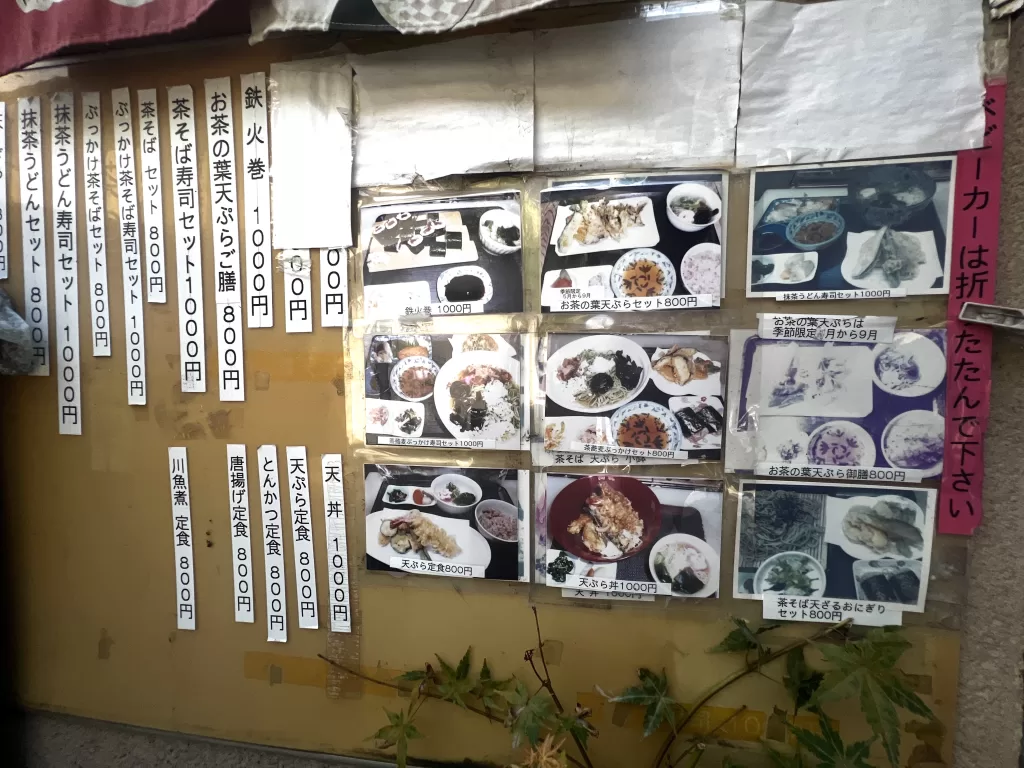
- Point-and-Order: if you’re at a local eatery without an English menu, observe what the locals are enjoying or point to dishes that catch your eye. The staff will appreciate your adventurous spirit!
Wrap Up
As a conclusion when visiting Japan without knowing Japanese, while we have described a comprehensive guide in this article from our personal experience, please do not also overthink. Personally speaking, I think the “must” when visiting here without knowing the language are Google Maps, Google Translate, as well as the sign of respect (slightly nodding your head), and saying thank you.
Your travels through Japan, even with a language barrier, will undoubtedly be sprinkled with moments of unexpected memorable encounters, and the gentle hospitality that Japan is renowned for.
Whether it’s through a warm smile exchanged with a local, the awe-inspiring sight of cherry blossoms in full bloom, or the tantalizing flavors of authentic Japanese cuisine, your experiences in Japan will weave a tapestry of memories that will be cherished forever.
In the words of a Japanese proverb, “Even a road of thousand miles begins with a single step.” Your step into the enchanting world of Japan, even without the cushion of language, is the beginning of a thousand beautiful memories.


